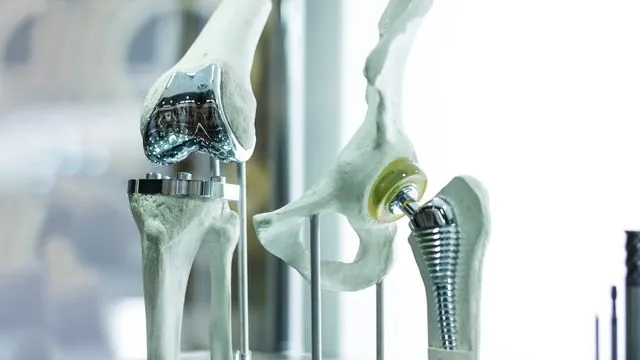
Unlocking the Secrets of Muscle Stem Cells: The Future of Bone Fracture Healing
2025-08-19
Author: Siti
Transforming Muscle into Bone: A Breakthrough Discovery
In a groundbreaking study, researchers have unveiled an astonishing ability of Prg4+ stem cells, originating from skeletal muscle, to repair fractured bones. Using mouse models, the team demonstrated that these remarkable cells have the power to morph from muscle tissue into bone cells, revolutionizing our understanding of fracture healing.
Common Misconceptions: Rethinking Bone Repair
Traditionally, it has been believed that bone fractures primarily heal through stem cells in the periosteum—the outer membrane of bones. However, this method of repair often falters, especially in severe cases like open fractures that expose bone and soft tissue. The reasons behind these failures have been unclear until now.
Meet Prg4+: The Body's Unsung Hero in Healing
Qin, along with her colleague Jaimo Ahn, PhD, a respected professor of Orthopaedics at Emory University, identified Prg4+ as a type of fibro-adipogenic progenitor (FAP). These stem cells act like an emergency response team, rushing to injury sites, producing essential cells like chondrocytes, osteoblasts, and osteocytes, which are crucial for effective bone repair.
A Miraculous Transformation: Muscle Cells Become Bone Cells
During their research, the team made an astounding observation: once the fractures began healing, Prg4+ cells fully transitioned into bone cells, effectively laying the groundwork for future healing. This seminal discovery marks the first evidence of such transformation from muscle to bone.
Impact on Healing: The Importance of Muscle
The findings of Qin, Ahn, and their colleagues shed new light on fracture treatment, emphasizing that muscle health is just as important as bone repair itself. Their research not only holds tremendous potential for severe injuries like open fractures but also could reshape how more common injuries are treated.
A Call to Action: Future Research and Implications
Ahn notes the implications for areas where muscles are less prevalent, such as the knee and ankle, and acknowledges the significance for older adults experiencing muscle loss. Future research will delve deeper into the unique repair capabilities of other fibro-adipogenic progenitor stem cells, paving the way for advanced treatments.
The Future of Fracture Healing: A New Frontier in Medicine
This revolutionary insight into muscle-derived stem cells could change the landscape of how we approach fractures and injuries, offering hope for more efficient, effective healing strategies. As this research progresses, the door is wide open for innovations that may one day make fractures a less daunting challenge.





 Brasil (PT)
Brasil (PT)
 Canada (EN)
Canada (EN)
 Chile (ES)
Chile (ES)
 Česko (CS)
Česko (CS)
 대한민국 (KO)
대한민국 (KO)
 España (ES)
España (ES)
 France (FR)
France (FR)
 Hong Kong (EN)
Hong Kong (EN)
 Italia (IT)
Italia (IT)
 日本 (JA)
日本 (JA)
 Magyarország (HU)
Magyarország (HU)
 Norge (NO)
Norge (NO)
 Polska (PL)
Polska (PL)
 Schweiz (DE)
Schweiz (DE)
 Singapore (EN)
Singapore (EN)
 Sverige (SV)
Sverige (SV)
 Suomi (FI)
Suomi (FI)
 Türkiye (TR)
Türkiye (TR)
 الإمارات العربية المتحدة (AR)
الإمارات العربية المتحدة (AR)